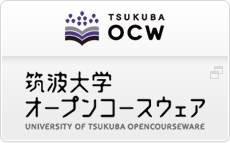どなたでも無料で聴講できるオンライン講義です。
内容についてご質問がある場合は、オンライン窓口よりお問い合わせください。
第三期プログラム
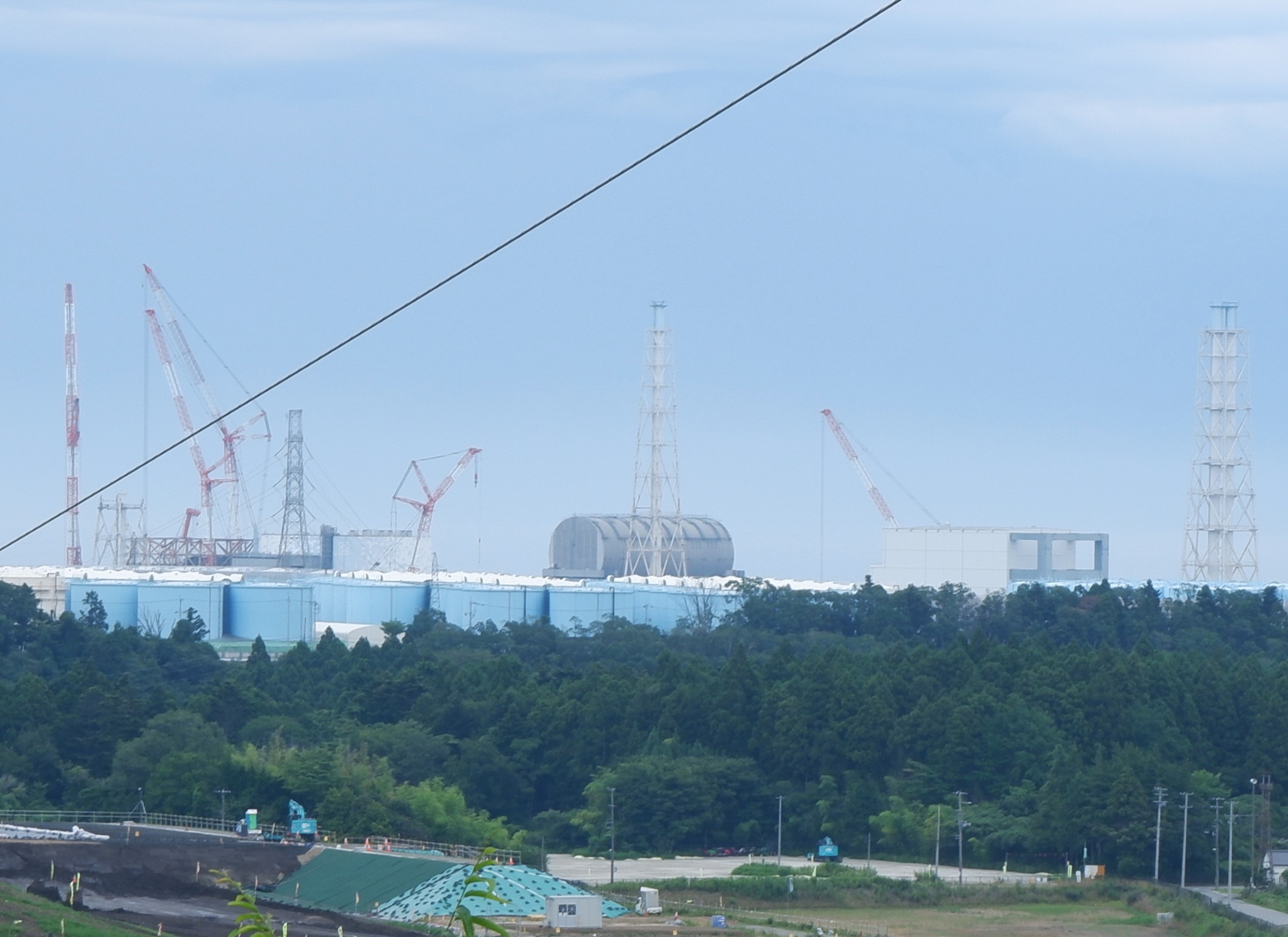
原子力災害環境影響評価論Ⅰ(2023)
日本原子力研究開発機構の講師が、機構が取り組む福島復興事業や廃棄物処理・処分事業について解説します。
(1) 福島第一原子力発電所事故後のJAEAの取り組み-田中 真氏
(2) 放射性セシウムの吸脱着メカニズム-本田充紀氏
(3) 高度化する無人モニタリング技術-佐々木美雪氏
(4) 福島長期環境動態研究-新里忠史氏
(5) 環境中の放射性核種分析方法の研究-藤原健壮氏
(6) 燃料デブリ取り出しに向けた研究-永江勇二氏
(7) 福島第一原子力発電所事故と災害対応ロボット-山田大地氏
(8) 放射性廃棄物の処分へ向けた研究-竹内竜史氏
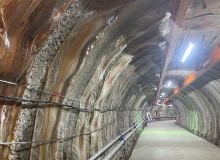
公開セミナー:Gerhard Proehl博士
【講師】Gerhard Proehl 博士 (筑波大学客員教授/ 元 IAEA Waste and Environmental Safety Section ユニット長)
【テーマ】ヨーロッパにおける放射性廃棄物地層処分事業の概要 Overview on some projects going onin Europe on disposal of radioactive waste

地質災害・地層環境評価論
鉱床の保存とナチュラルアナログ研究(富山大学 小室光世)
①放射性廃棄物地層処分と性能評価
②ウラン鉱床の形成・保存とナチュラルアナログ研究
③日本列島の地質環境の長期的評価
④日本列島における鉱床の形成と保存
⑤日本列島のウラン鉱床のナチュラルアナログ研究
第二期プログラム
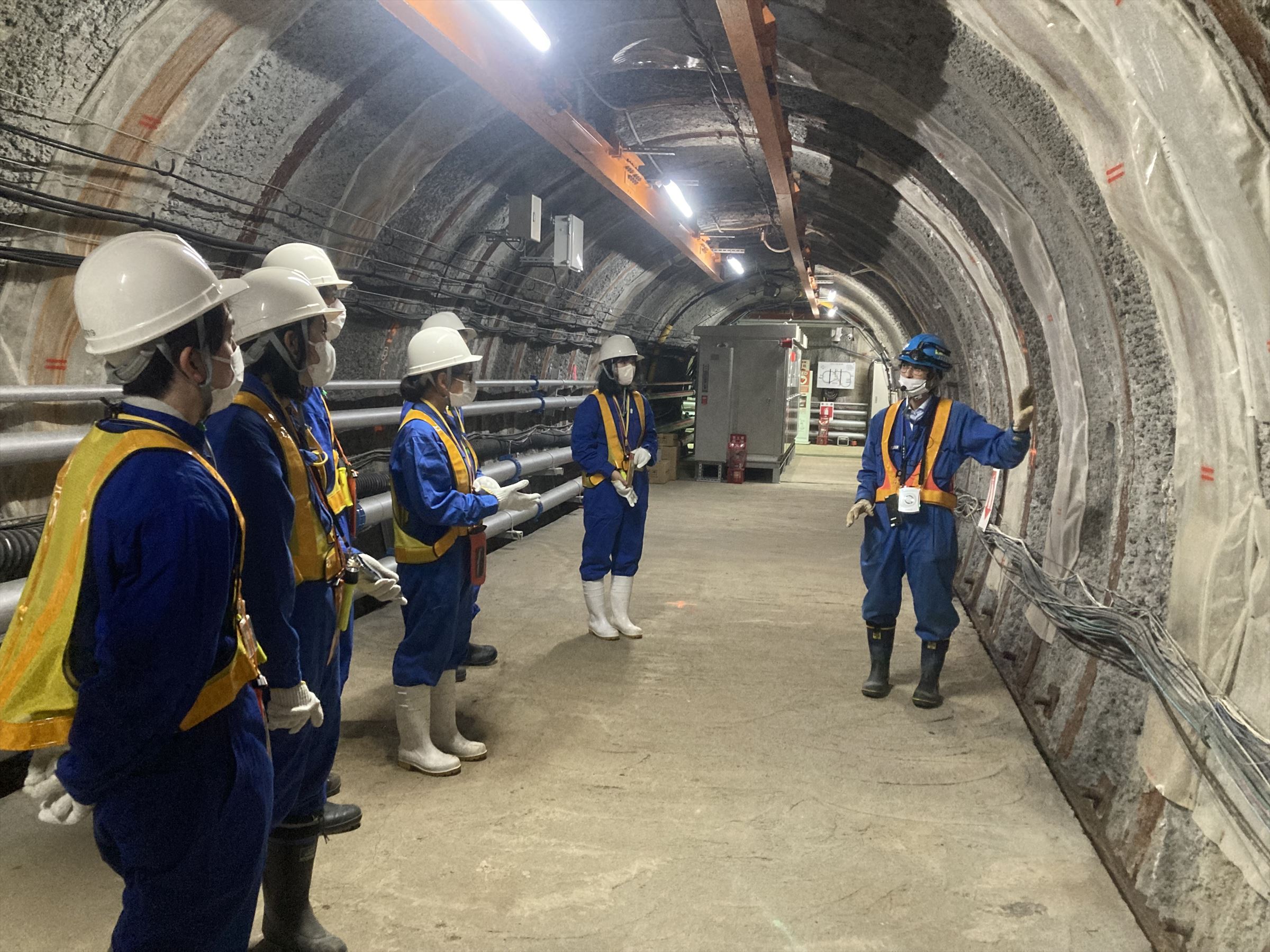
環境動態解析学野外実験Ⅱ(2021)
日本原子力研究開発機構と連携し、オンラインによる講義、バーチャル地下見学を通じて地層処分の基盤的なこと、幌延計画での取り組み等について学ぶ。

原子力災害特別セミナー(2021)
海外の講師が最先端の研究トピックを紹介します。
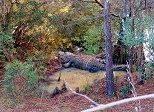
環境動態解析学野外実験Ⅱ(2020)
日本原子力研究開発機構らと連携し、オンラインによる講義を通じて国内外における核燃料の処理や地層処分、原子力の安全性についての現状を学ぶ。
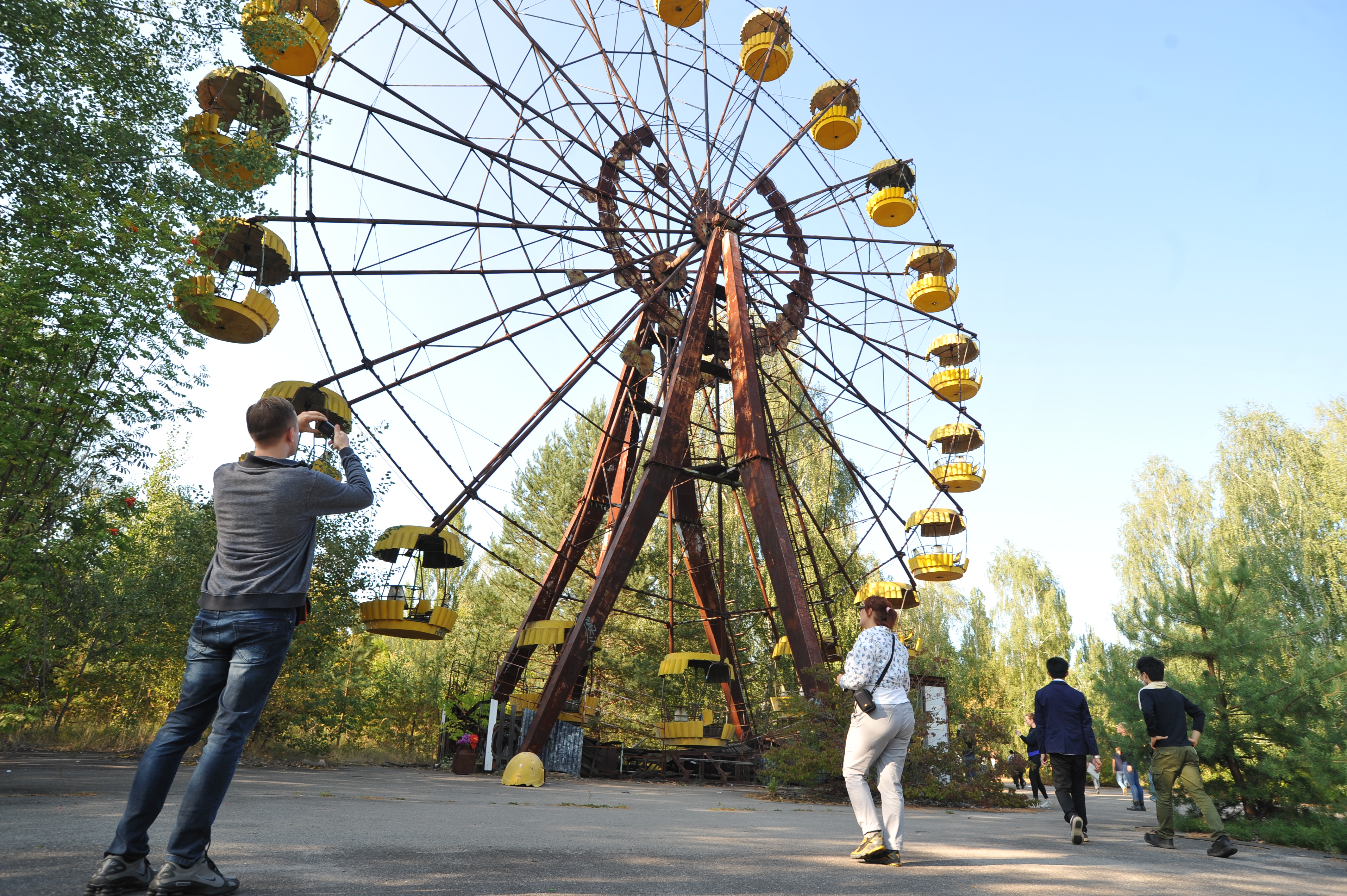
原子力災害特別セミナー(2020)
海外の講師が最先端の研究トピックを紹介します。
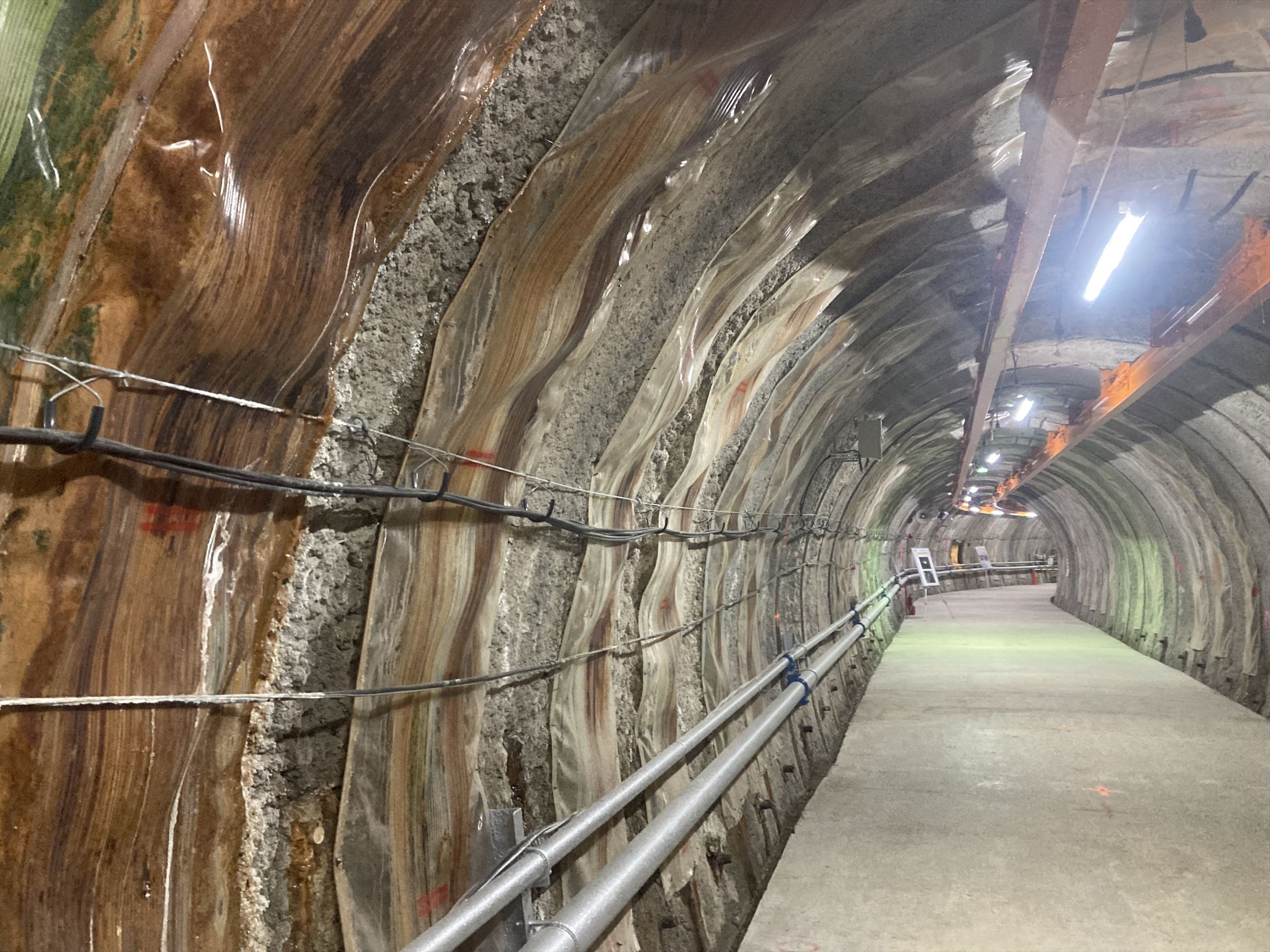
地質災害・地層環境評価論(2020)
地層処分の概要と地層処分事業に関わる地球科学の基礎、地層、地形、地下水流動等の評価方法について解説します。
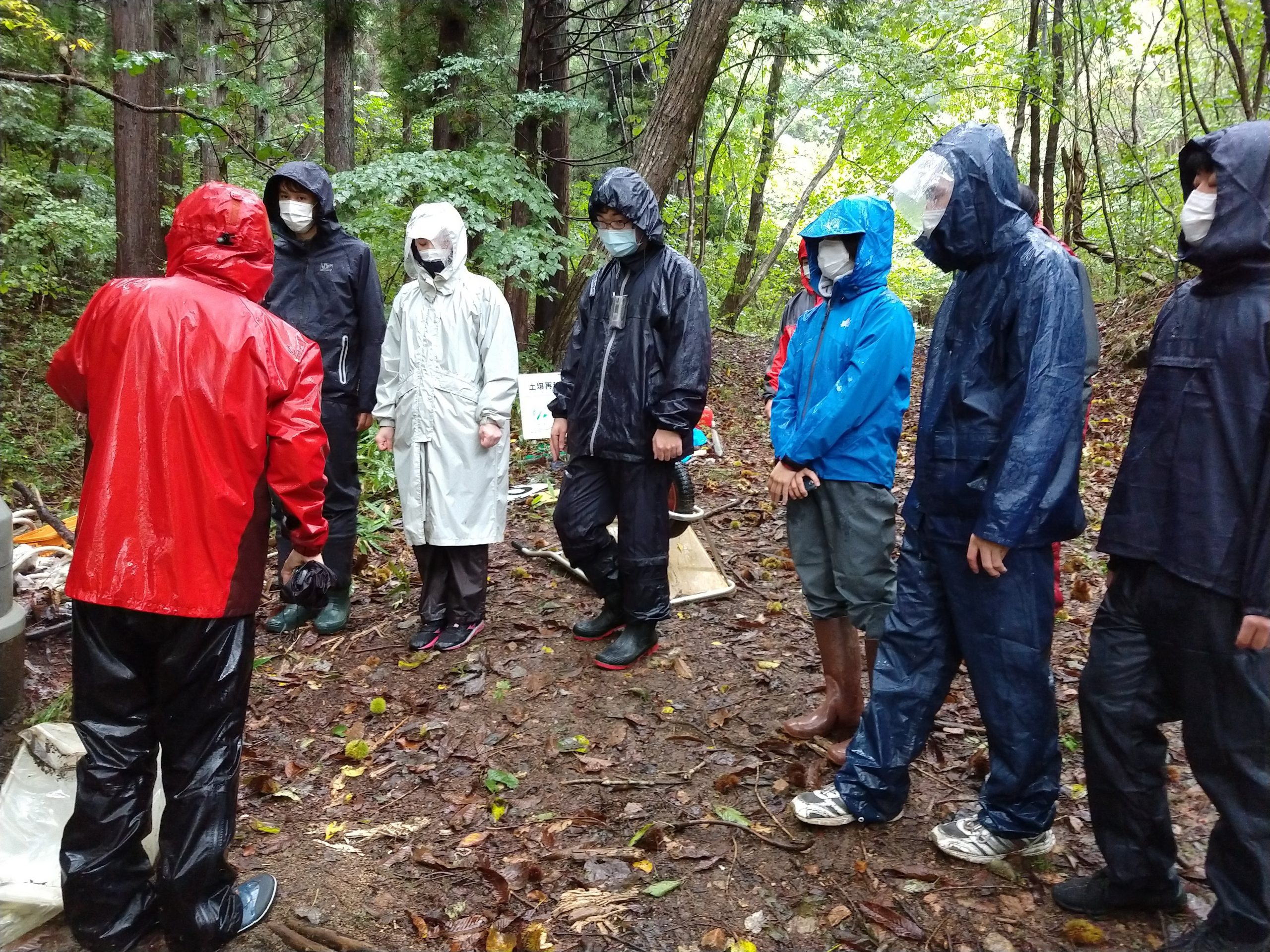
原子力災害環境影響評価論Ⅱ(2020)
産総研・量研機構・国環研などの講師により、事故後の環境影響評価や除染対策、環境モニタリングについて解説します。
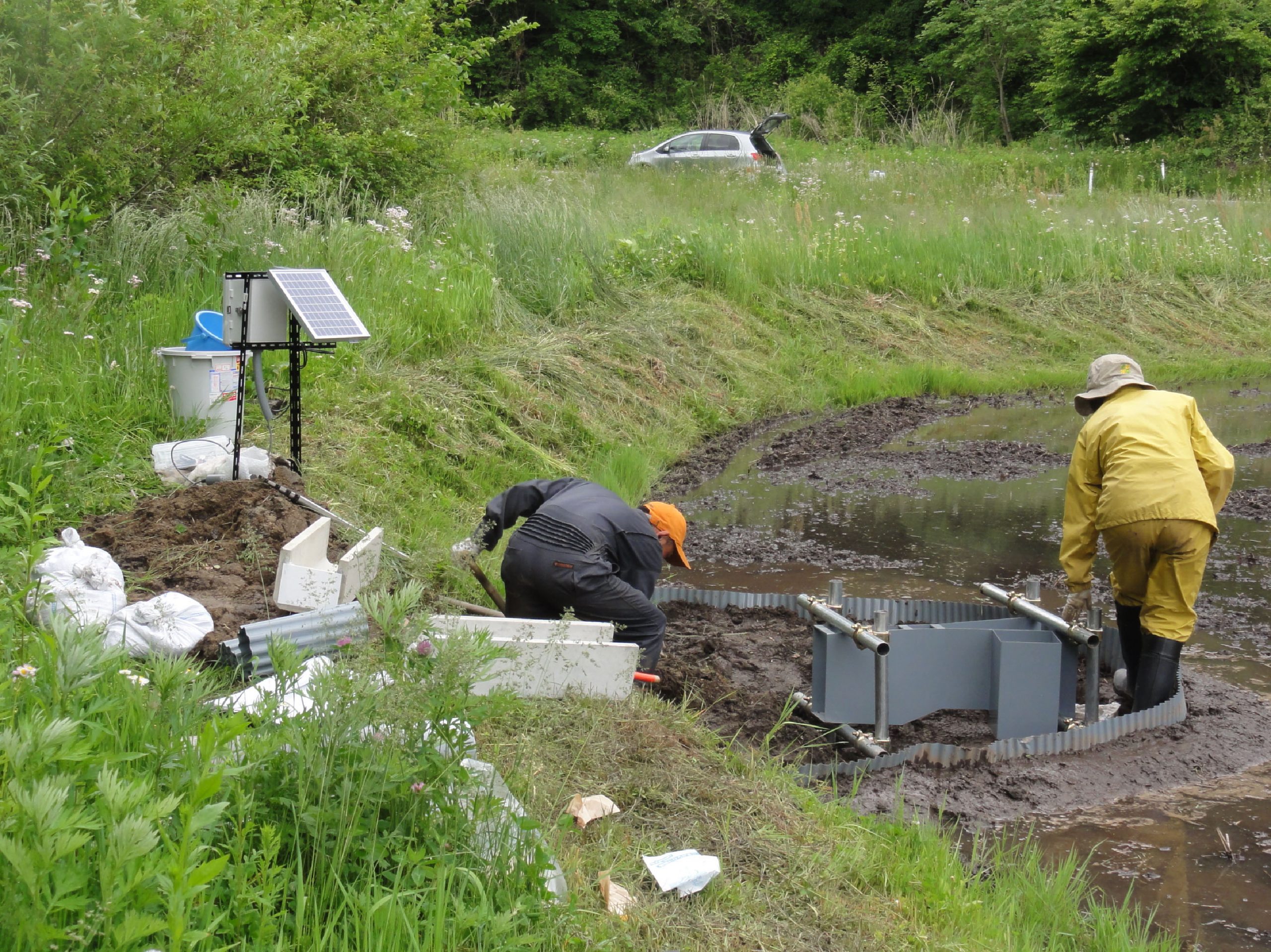
原子力災害環境影響評価論Ⅰ(2020)
日本原子力研究開発機構の講師が、機構が取り組む福島復興事業や廃棄物処理・処分事業について解説します。
(1) 福島第1原子力発電所事故後のJAEAの取り組み-川瀬啓一氏
(2) 放射性セシウムの吸脱着メカニズム-本田充紀氏
(3) 高度化する無人モニタリング技術-佐々木美雪氏
(4) 放射能マップはこうしてできあがる-阿部智久氏
(5) 福島長期環境動態研究-新里忠史氏
(6) 環境中の放射性核種分析方法の研究-藤原健壮氏
(7) 原子力災害対応ロボットと楢葉遠隔技術開発センター-山田大地氏
(8) 燃料デブリ取り出しに向けた研究-佐藤一憲氏
(9) 事故に由来する廃棄物の管理と放射性核種の汚染ふるまい-駒義和氏
(10) 放射性廃棄物の処分へ向けた研究-竹内竜史氏
講義ファイル
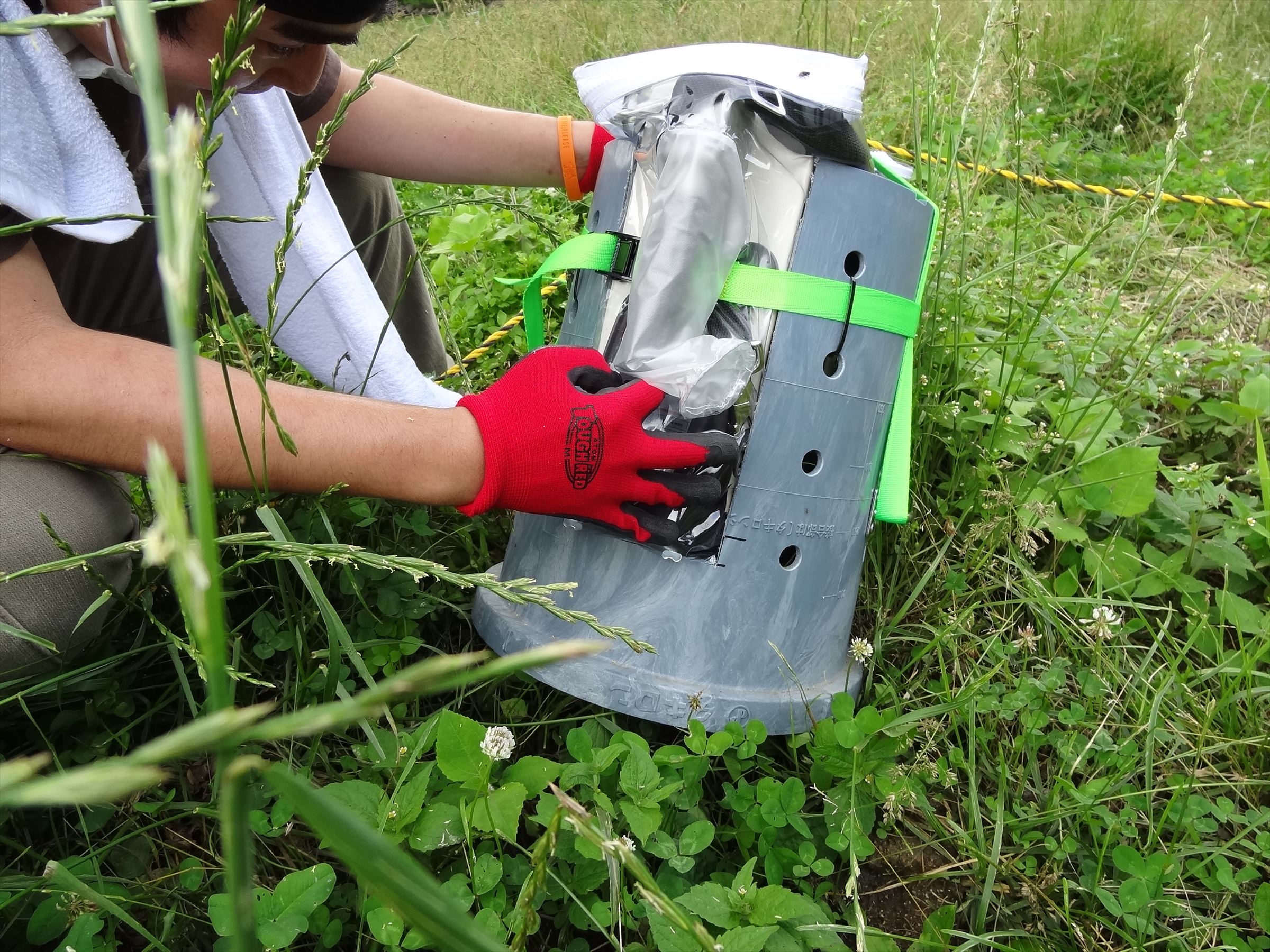
環境放射能動態解析論(2020)
放射性核種や放射線の基礎から大気、森林、土壌、河川、海洋などの環境中での動態、モデリング手法について解説します。
(1) 環境中の放射性核種(1)放射性核種とは?
(2) 環境中の放射性核種(2)原子力災害の歴史
(3) 環境中移行・評価手法(1)大気中の放射性物質の移行
(4) 環境中移行・評価手法(2)海洋での放射性物質の移行
(5) 環境中移行・評価手法(3)森林中の放射性物質の移行と循環
(6) 環境中移行・評価手法(4)土壌中の放射性物質とその挙動
(7) 環境中移行・評価手法(5)河川を通じた放射性物質の移行
(9) モデリング手法(1)植物体内での転流
(10) モデリング手法(2)線量評価
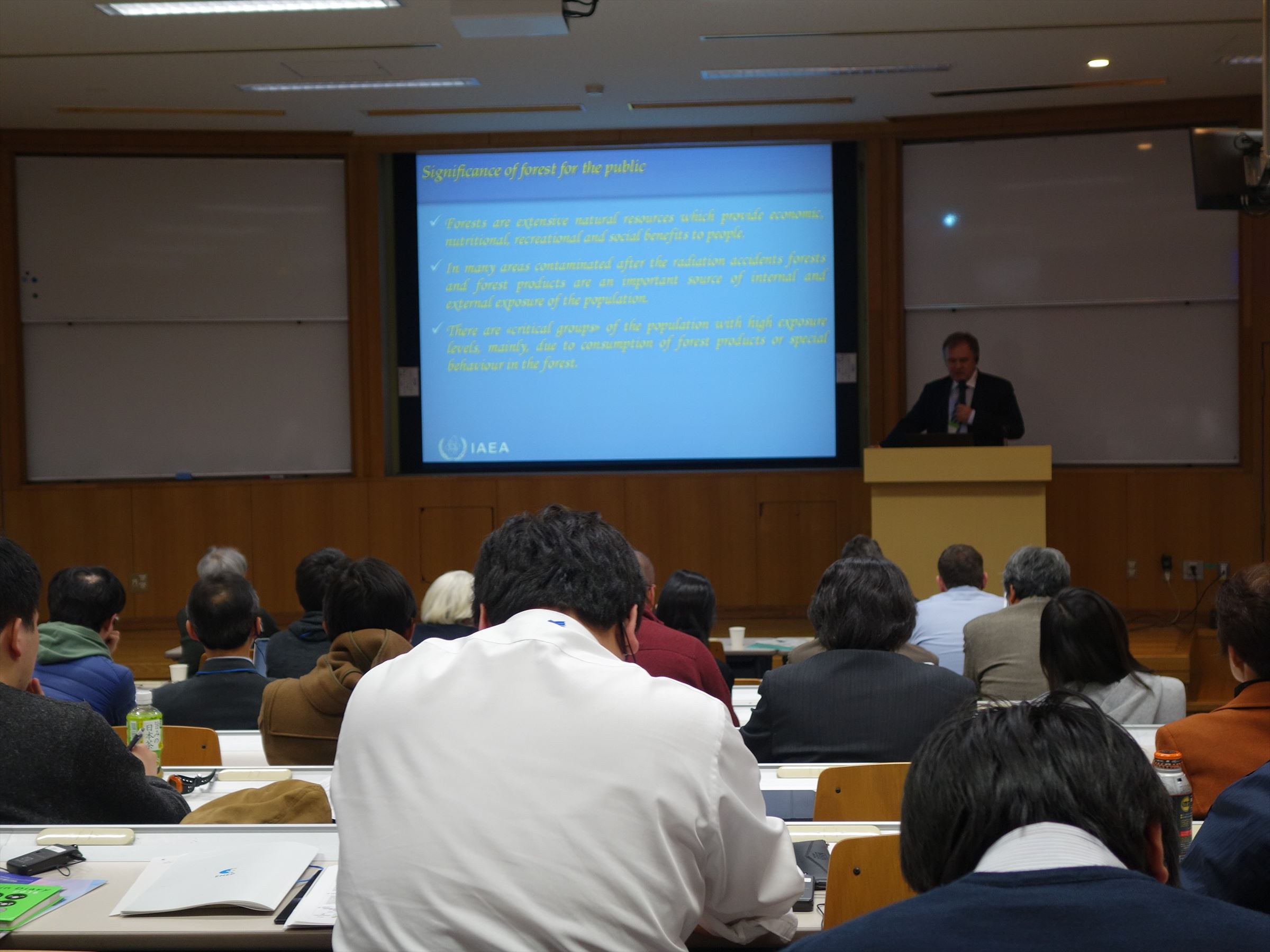
ENEP 新プログラム キックオフシンポジウム (2020)
国内外から招いた5名の演者が放射性廃棄物の処理・処分の現状と課題、そして今後求められる人材像などについて講義する。
(1) 地層処分事業の概要と技術開発
(2) JAEAにおける地層処分技術に関する研究開発
(3) Ongoing challenges: Emergency Management and Management of Radioactive Waste
(4) Environmental Impact of Nuclear Waste: Insights from US Nuclear Weapon sites
(5) Dose assessment during radiation emergencies and waste disposals
講義ファイル
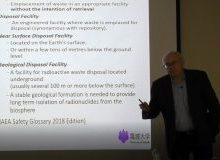
集中講義:Gerhard Proehl博士 (元IAEA ユニット長) (2020)
筑波大学大学院 地球科学学位プログラム:
「原子力緊急時対応と放射性廃棄物処理・処分を支える高度人材育成事業」(ENEP)における、Gerhard Proehl博士 (元IAEA Waste and Environmental Safety Section ユニット長) による集中講義
(1) Radioactivity and radiation exposure from natural sources
(2) The International system of Radiation Protection
(3) Methodology for the assessment of exposures to people following nuclear accidents
(4) Long-term trends of radionuclides in foodstuffs
(5) The nuclear accidents in the Chernobyl NPP and the Fukushima Daiichi Nuclear Power Station
(6) A comparison of remediation after the Chernobyl and Fukushima Daiichi Accidents
(7) IAEA Safety Standards for the management of Radioactive Waste
(8) Overview of options for disposal of radioactive waste
(9) Assessing potential exposures to people in the post-closure period of a waste disposal facility I. General aspects
(10) Assessing potential exposures to people in the post-closure period of a waste disposal facility II. From present to future conditions
(11) Assessing potential exposures to people in the post-closure period of a waste disposal facility III. Option A: Elaborating an envelope for future conditions –The analogue approach
(12) Assessing potential exposures to people in the post-closure period of a waste disposal facility IV. Option B: Modelling future climates and landscapes
講義ファイル
- (1) Radioactivity and radiation exposure from natural sources
- -Transcription
- (2) The International system of Radiation Protection
- -Transcription
- (3) Methodology for the assessment of exposures to people following nuclear accidents
- -Transcription
- (4) Long-term trends of radionuclides in foodstuffs
- (5) The nuclear accidents in the Chernobyl NPP and the Fukushima Daiichi Nuclear Power Station
- -Transcription
- (6) A comparison of remediation after the Chernobyl and Fukushima Daiichi Accidents
- -Transcription
- (7) IAEA Safety Standards for the management of Radioactive Waste
- -Transcription
- (8) Overview of options for disposal of radioactive waste
- -Transcription
- (9) Assessing potential exposures to people in the post-closure period of a waste disposal facility I. General aspects
- (10) Assessing potential exposures to people in the post-closure period of a waste disposal facility II. From present to future conditions
- (11) Assessing potential exposures to people in the post-closure period of a waste disposal facility III. Option A: Elaborating an envelope for future conditions –The analogue approach
- (12) Assessing potential exposures to people in the post-closure period of a waste disposal facility IV. Option B: Modelling future climates and landscapes
動画
- (1) Radioactivity and radiation exposure from natural sources
- (2) The International system of Radiation Protection
- (3) Methodology for the assessment of exposures to people following nuclear accidents
- (4) Long-term trends of radionuclides in foodstuffs
- (5) The nuclear accidents in the Chernobyl NPP and the Fukushima Daiichi Nuclear Power Station
- (6) A comparison of remediation after the Chernobyl and Fukushima Daiichi Accidents
- (7) IAEA Safety Standards for the management of Radioactive Waste
- (8) Overview of options for disposal of radioactive waste
- (9) Assessing potential exposures to people in the post-closure period of a waste disposal facility I. General aspects
- (10) Assessing potential exposures to people in the post-closure period of a waste disposal facility II. From present to future conditions
- (11) Assessing potential exposures to people in the post-closure period of a waste disposal facility III. Option A: Elaborating an envelope for future conditions –The analogue approach
- (12) Assessing potential exposures to people in the post-closure period of a waste disposal facility IV. Option B: Modelling future climates and landscapes
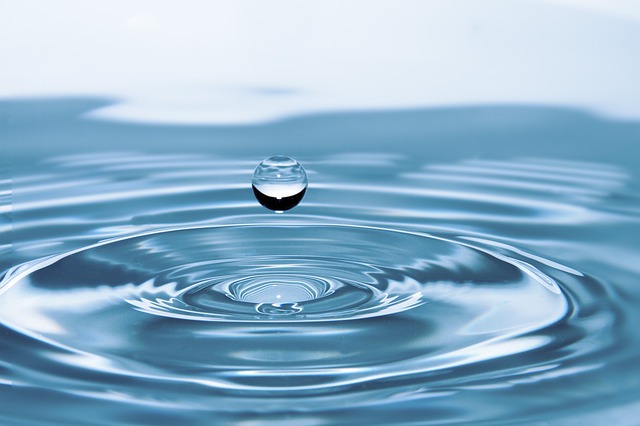
合同特別セミナー(2018)
イタリアにおける水の環境モニタリングについて紹介する。
テーマ;Risk management and Determination, subjected to radioactive materials in the water
(地表水及び地下水を通じて移行する放射性物質のリスクアセスメント、及び水の放射性物質モニタリングにおける検出限界値の決定方法について)
講師;Dr. Rosella Rusconi(ARPA Lombardia, Settore Attivita Produttive e Controlli, Centro Regionale Radioprotezione)

ラップアップシンポジウム(2018)
環境放射能リスク管理の専門家が「原子力分野で求められる人材」「高等教育に求めること」について、自身の経験を交えて講義する。
1)環境回復の取組と人材育成 ENEPに期待すること 宮原要氏(日本原子力研究開発機構)
2)人材育成の方策 柴田徳思氏(株式会社千代田テクノル)

原子力災害海外特別実習(2017)
フランス(フォントネーオーローズ、カダラシュ)、ウクライナ(キエフ、チェルノブイリ)、オーストリア(IAEA ウィーン事務局、サイバースドルフ研究所)など、海外協力機関において実習し、高度な実践的能力と知識、現場理解力を養う。
講義ファイル
動画

原子力災害特別セミナー(2017)
IAEA、イギリスCenter for Ecology & Hydrologyから講師を招き、最先端の研究を交えた海外の原子力災害の実例や環境影響への評価法を学ぶ。
(1) Radiological protection of the environment
(2) Red fire, Chernobyl 31 years later
(5) The role of the IAEA
(6) Overview on the MODARIA II
(7) The influence of the season, ECOSYS
(8) Transfer of radionuclides
(10) Nuclear Accidents
(11) A comparison of remediation after the accidents
講義ファイル
- (1) Intro
- (2) Radioactivity refresher
- (3) Radiation protection of the environment
- (4) Chernobyl 31 years later
- (5) The role of IAEA
- (6) Overview on the MODARIA II
- (7) The influence of the season
- (8) Transfer of radionuclides
- (9) Nuclear Accidents
- (10) Nuclear Accidents
- (11) A comparison of remediation after the accidents
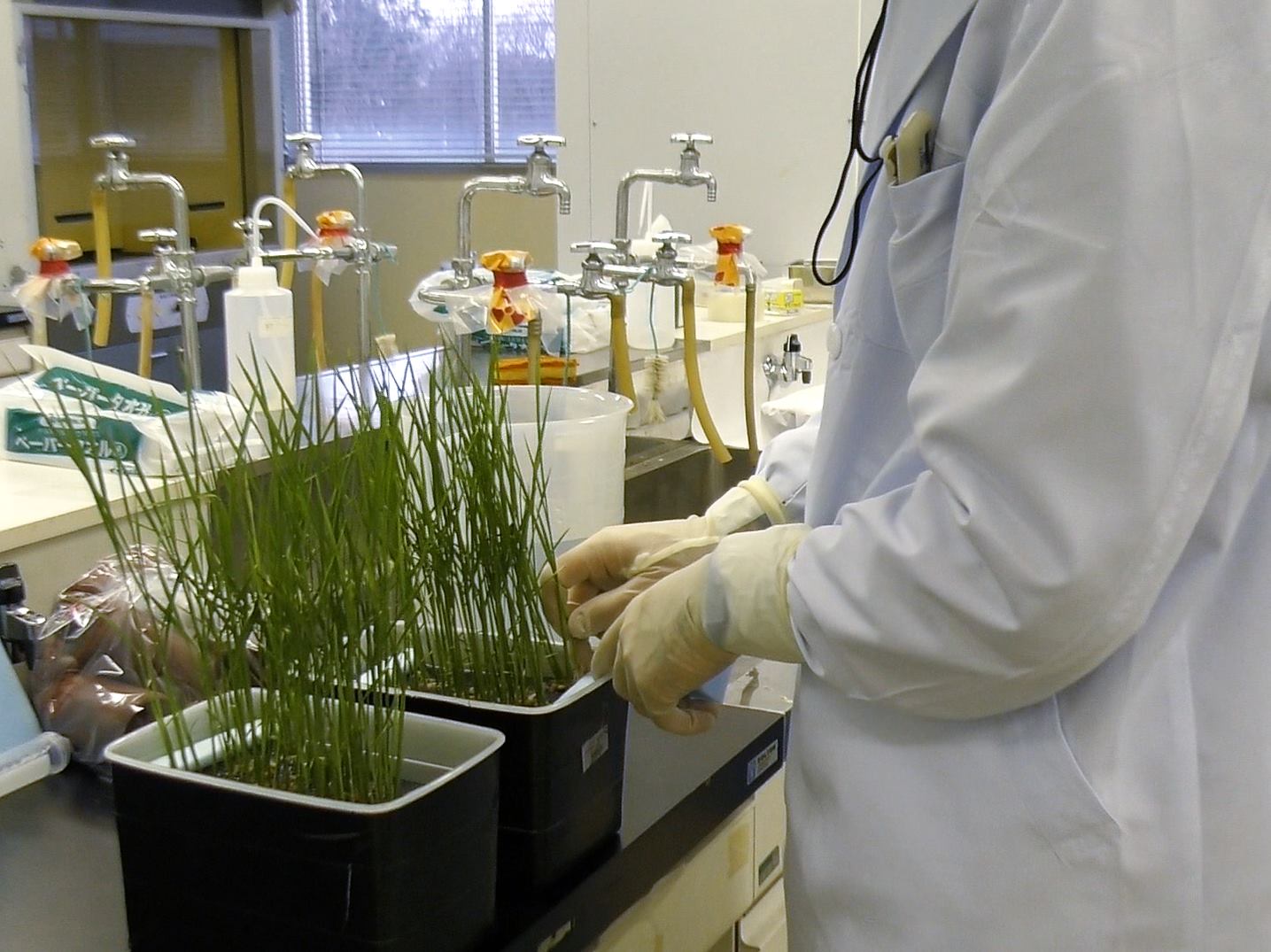
環境放射能動態解析論Ⅱ(2017)
環境放射能の観測・測定方法を実験・実習によって習得する。
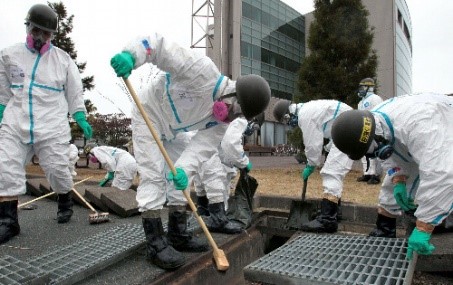
集中講義:原子力災害環境影響評価論Ⅲ(2017)
原子力災害後の農業、産業、生態系などへの包括的な影響と緊急時のモニタリング技術を理解する。
(1) 環境放射線モニタリング(平常時から緊急時まで)
講義ファイル


原子力災害環境影響評価論Ⅰ(2017)
原子力災害により環境中に放出された放射性核種について、その拡散、沈着、移行過程と水・物質循環との関わりを理解する。
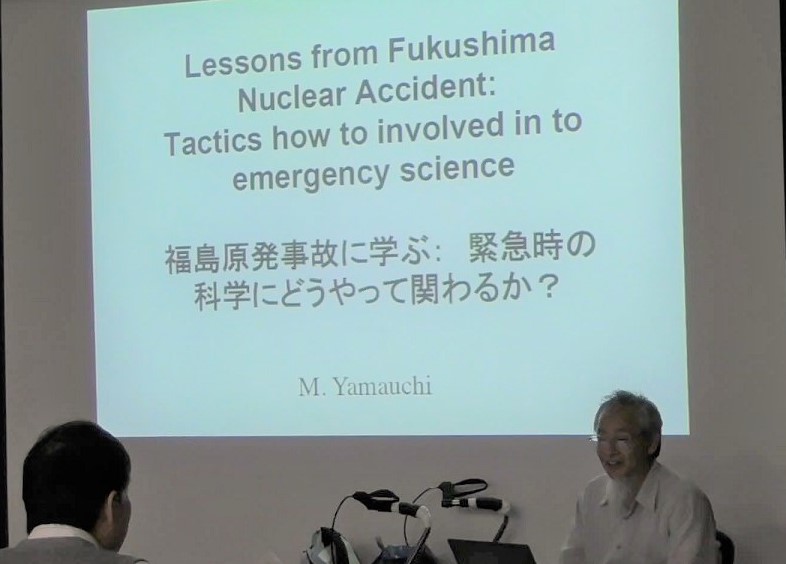
公開セミナー『原発事故直後の科学者の活動』(2016)
原子力事故後の緊急行動指針や、放射能漏れに対する個人対策等に関する一般公開セミナー。
日時:2016年11月16日(水)15:00-16:30
講師:山内正敏氏(スウェーデン国立スペース物理研究所研究員)
内容:
・web 発信の強力さ
・専門の異なる研究者との交流の場のもうけ方
・海外の専門情報の紹介のしかた
・若手が動きにくい問題の解決法
・学会での働きかけ方
・長期モニターの必要性 ほか
講義ファイル
動画

原子力災害海外特別実習(2016)
ウクライナ(キエフ、チェルノブイリ)、オーストリア(IAEA)、イギリス(Dalton Cumbria Facility、リバプール大学)など、海外協力機関において実習し、高度な実践的能力と知識、現場理解力を養う。
講義ファイル

原子力災害特別セミナー(2016)
IAEA、IRSN、ウクライナ気象研究所、リバプール大学、プリマス大学等から講師を招き、最先端の研究を交えた海外の原子力災害の実例や環境影響への評価法を学ぶ。(全4回)
(1) チェルノブイリ原子力発電所事故によるCs-137やその他放射性核種の河川・湖等における動態について
(2) 土壌における放射性物質の移行メカニズムについて
(3)-1 On the Evolution of Radioecology
(3)-2 The environmental effects from Chernobyl accident
(3)-3 Challenges and controversies of protecting the environment from ionizing radiation
(4)-1 Ukranian national radioactive waste management program
(4)-2 Radioactive waste characterization in Ukraine
(4)-3 Environmental radiation monitoring in Chernobyl exclusion zone
講義ファイル
- (1) チェルノブイリ原子力発電所事故によるCs-137やその他放射性核種の河川・湖等における動態について
- (2)-1 土壌における放射性物質の移行メカニズムについて
- (2)-2 土壌における放射性物質の移行メカニズムについて
- (2)-3 土壌における放射性物質の移行メカニズムについて
- (2)-4 土壌における放射性物質の移行メカニズムについて
- (3)-1 On the Evolution of Radioecology
- (3)-2 The environmental effects from Chernobyl accident
- (3)-3 Challenges and controversies of protecting the environment from ionizing radiation
- (4)-1 Ukranian national radioactive waste management program
- (4)-2 Radioactive waste characterization in Ukraine
- (4)-3 Environmental radiation monitoring in Chernobyl exclusion zone
動画
- (1) チェルノブイリ原子力発電所事故によるCs-137やその他放射性核種の河川・湖等における動態について
- (2) 土壌における放射性物質の移行メカニズムについて
- (3)-1 On the Evolution of Radioecology
- (3)-2 The environmental effects from Chernobyl accident
- (3)-3 Challenges and controversies of protecting the environment from ionizing
- (4)-1 Ukranian national radioactive waste management program
- (4)-2 Radioactive waste characterization in Ukraine
- (4)-3 Environmental radiation monitoring in Chernobyl exclusion zone

環境放射能動態解析論Ⅱ(2016)
環境放射能の観測・測定方法を実験・実習によって習得する。

集中講義:原子力災害環境影響評価論Ⅲ(2016)
原子力災害後の農業、産業、生態系などへの包括的な影響と緊急時のモニタリング技術を理解する。
(1) 河川流域における福島第一原発事故由来の放射性Csの動態
(2) 環境放射線モニタリング(平常時から緊急時まで)
(3) 低濃度の水中の放射性Csの測定手法とその標準化、除染の費用と効果、放射性Cs含有土壌の減容化技術

集中講義:原子力災害環境影響評価論Ⅱ(2016)
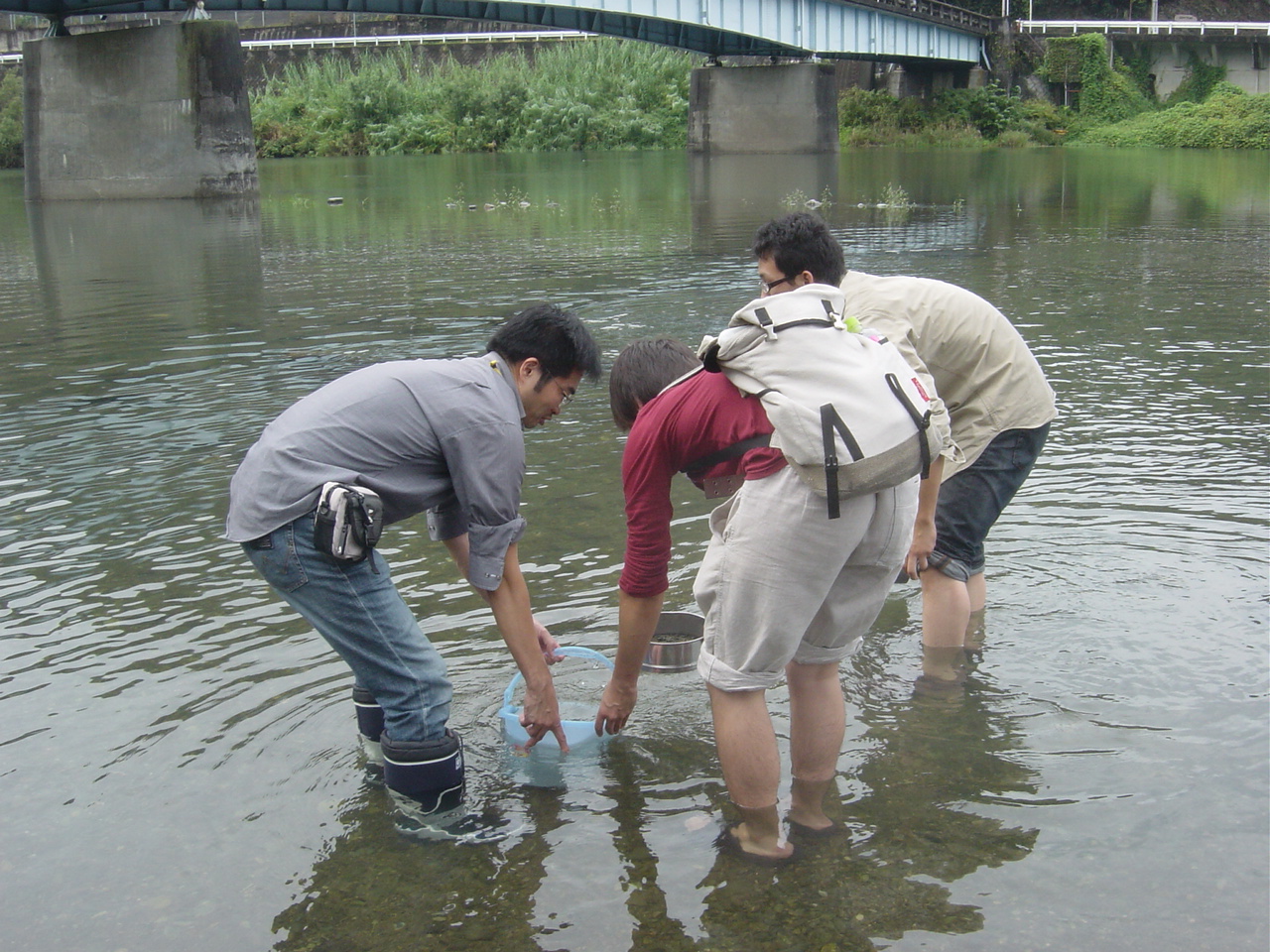
原子力災害環境影響評価論Ⅰ(2016)
原子力災害により環境中に放出された放射性核種について、その拡散、沈着、移行過程と水・物質循環との関わりを理解する。
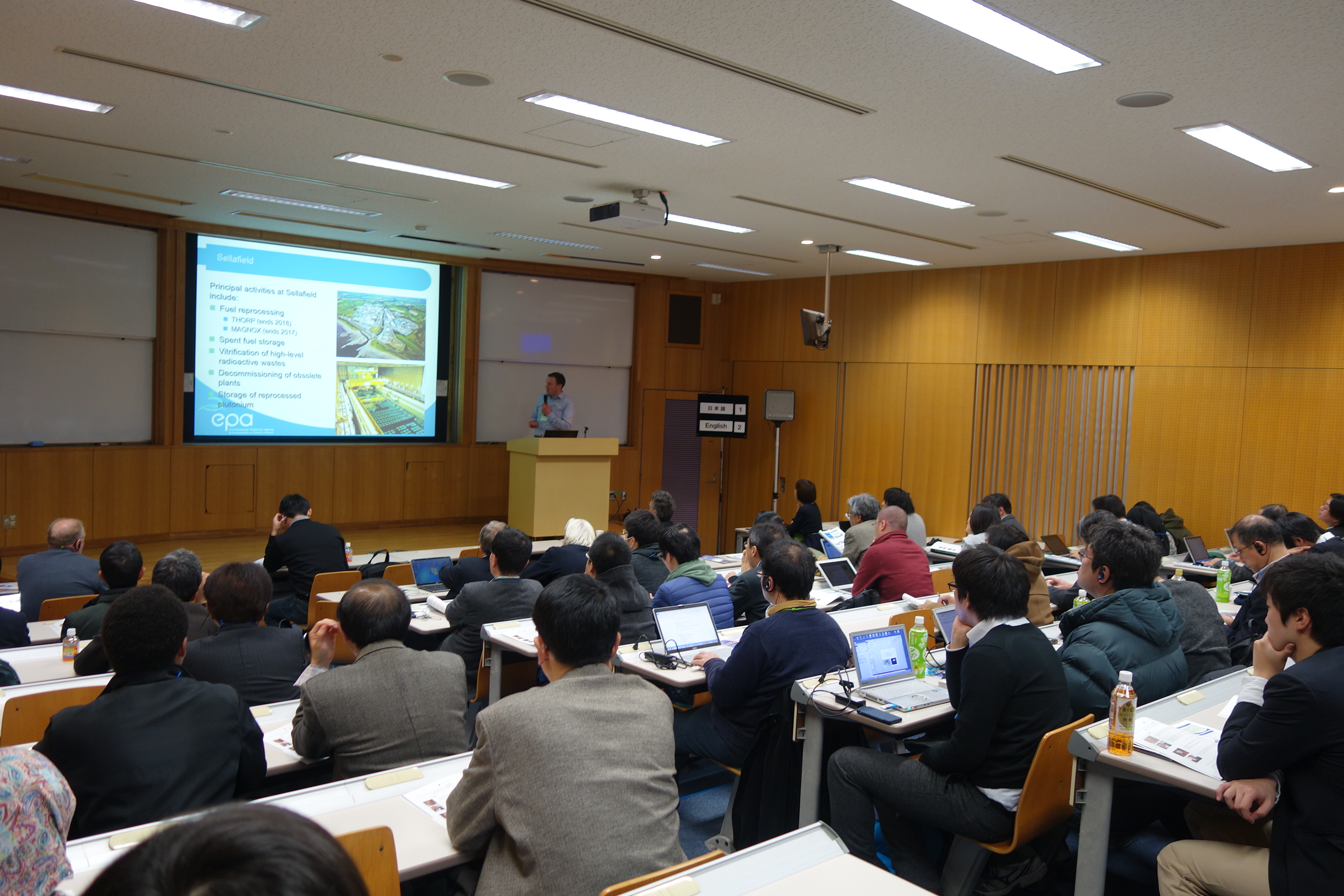
ENEPキックオフシンポジウム
世界の原子力事故の概要と、それによる生態系(海洋、河川)、近隣諸国への影響を紹介する。
(1) セラフィールド(イギリス)での放射線漏洩とその海洋環境影響について
(2) サベナリバー核施設(アメリカ)からの放射線漏洩と生態系環境影響(河川)について
(3) マヤック核施設(ロシア)からの放射線漏洩と環境影響(河川)について
(4) チェルノブイリ原発事故による森林環境影響について
講義ファイル
第一期プログラム

合同特別セミナー「地表水及び地下水を通じて移行する放射性物質のリスクアセスメント、及び水の放射性物質モニタリングにおける検出限界値の決定方法について」
イタリアにおける水の環境モニタリングについて紹介する。
原子力人材育成プログラム成果発表ラップアップシンポジウム ゲスト講演-ENEP Wrap Up Symposium (Guest lecture)
環境放射能リスク管理の専門家が「原子力分野で求められる人材」「高等教育に求めること」について、自身の経験を交えて講義する。
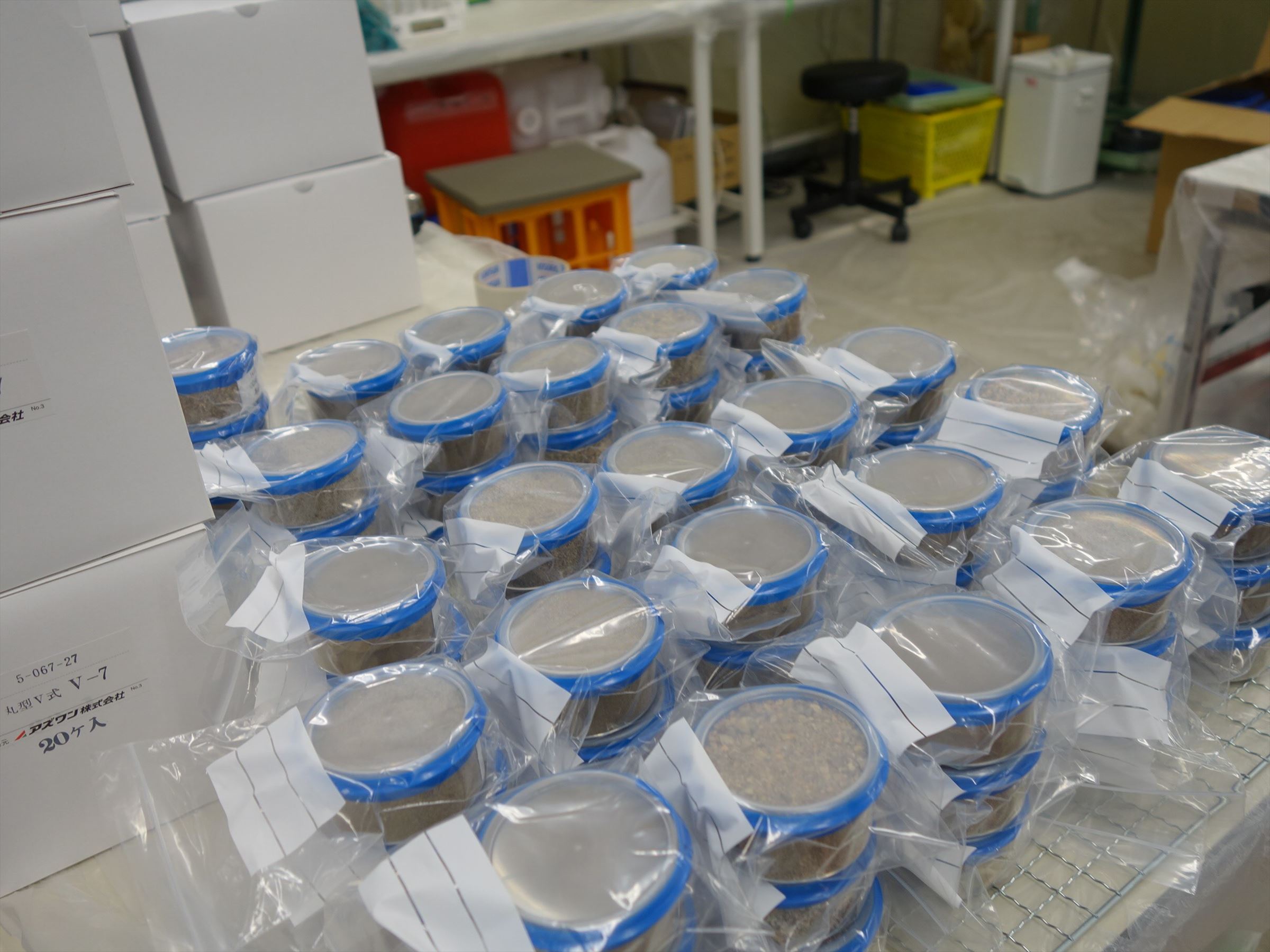
公開セミナー「原発事故直後の科学者の活動」
開催日時 : 2016年11月16日(水)15:00-16:30
場所 : 筑波大学総合研究棟A107
参加費 : 無料
講師 : 山内正敏氏(スウェーデン国立スペース物理研究所研究員)
テーマ : 「原発事故直後の科学者の活動」
講義ファイル
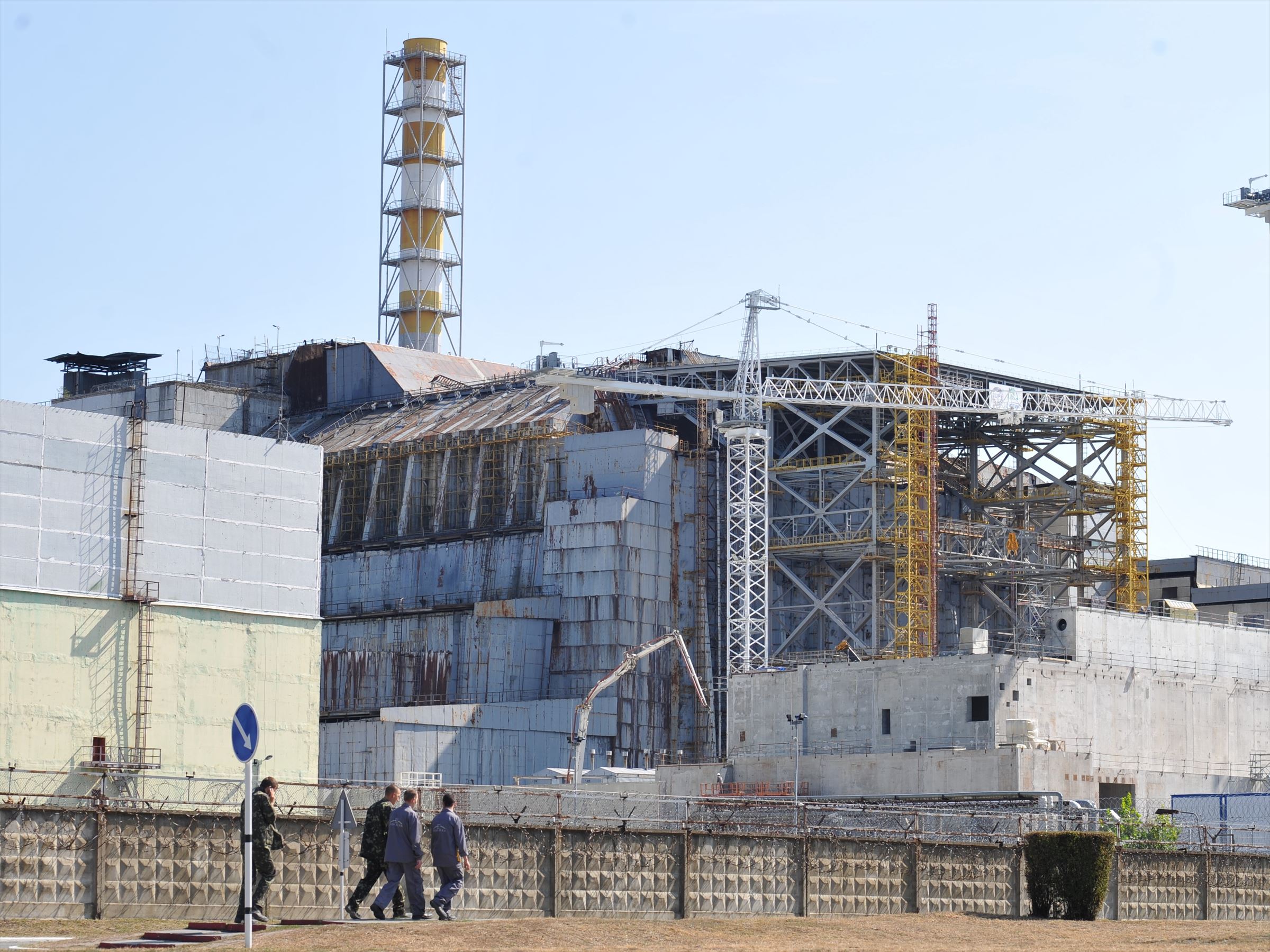
原子力災害海外特別実習
ウクライナ(チェルノブイリ)、オーストリア(国際原子力機関)、イギリス(リバプール大学 2016年訪問)、フランス(放射線防護・原子力安全研究所 2017年訪問)における海外実習。高度な実践的能力と知識、現場理解力を養う。
講義ファイル
動画
- SEASCALE BEACH LECTURE(2016)
- PARTICLE HUNTING IN AEROSOL SAMPLING (2016)
- DALTON CUMBRIAN FACILITY TOUR (2016)
- CHERNOBYL LABORATORY (2016)
- PARTICLE HUNTING IN SOIL AND SEDIMENTS, AUTORADIOGRAPHY, FISH SAMPLING AND DISSECTION (2016)
- WATER FRACTIONATION, SEQUENTIAL EXTRACTIONS (2016)
- ENEP International Intership 2016(overview)
- International Internship in Assessment and Prognosis for Nuclear Emergency (2017)
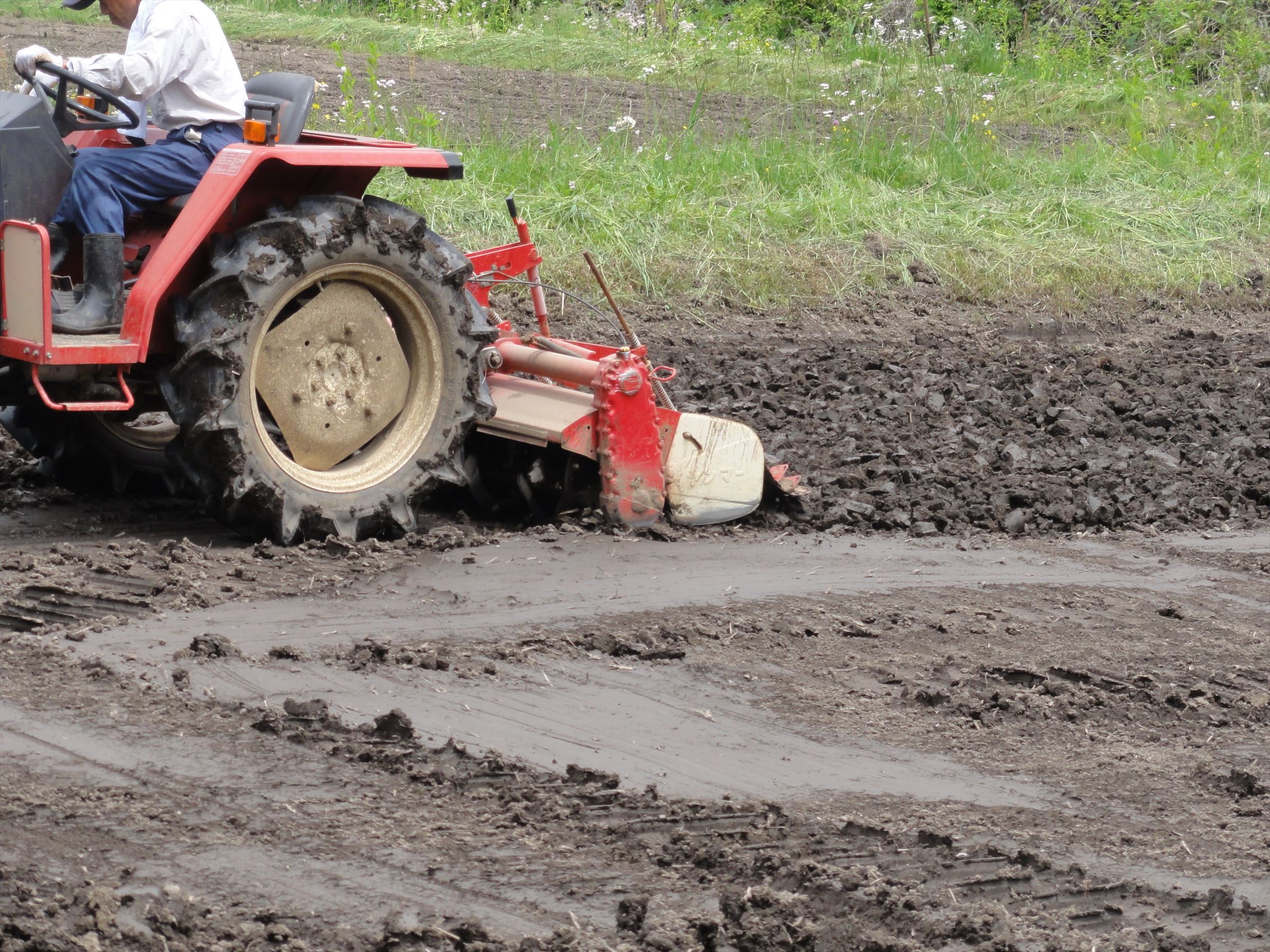
原子力災害環境影響評価論Ⅲ
原子力災害に対する緊急取り組みの現状と課題について、緊急時モニタリング、大気拡散、農業への影響、河川、湖沼、生態系への影響、測定法等を紹介する。
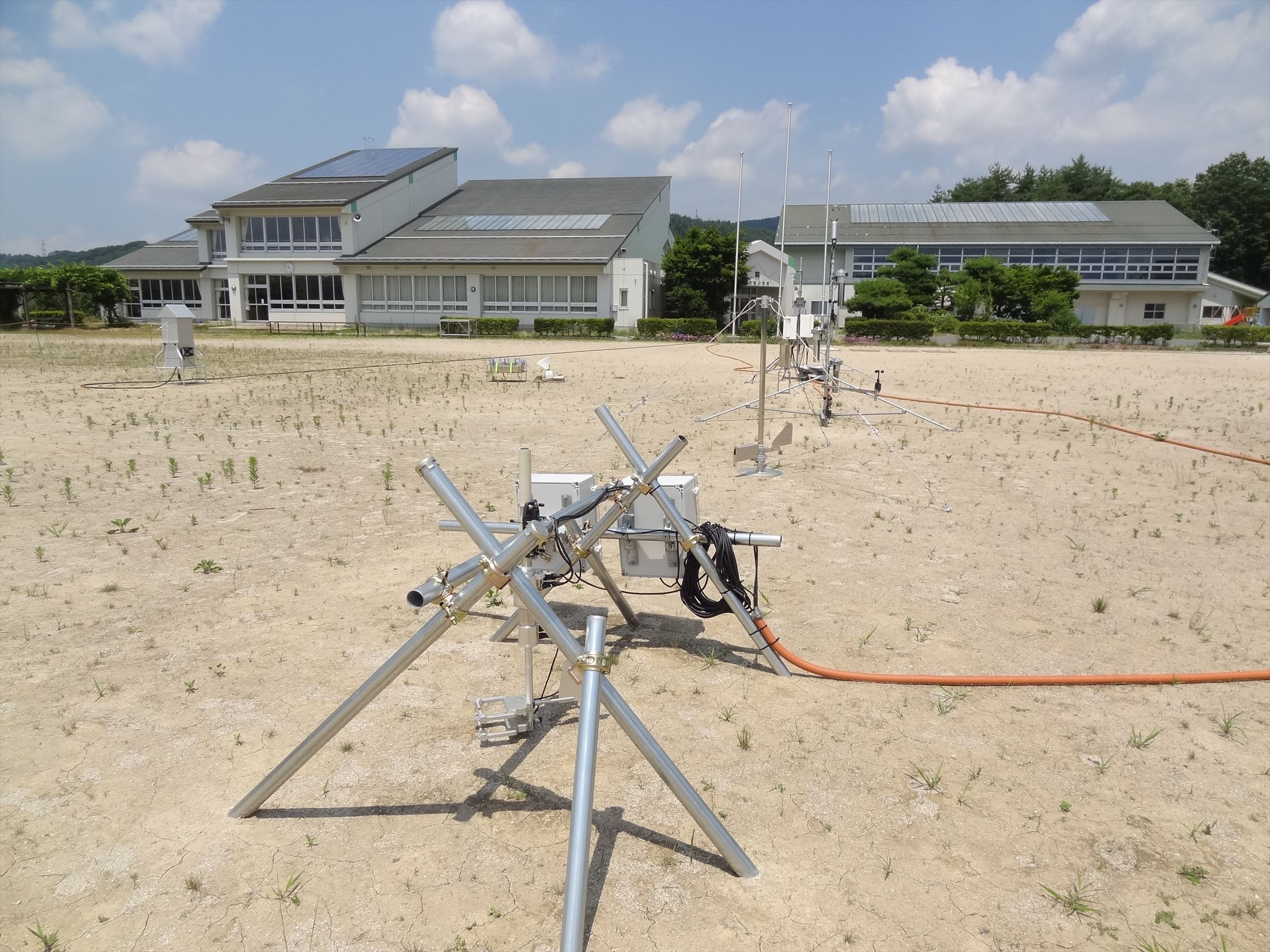
原子力災害環境影響評価論Ⅱ
日本原子力機構が取り組む福島復興事業や原発の廃炉措置に関する研究および緊急時対応などについて紹介する。
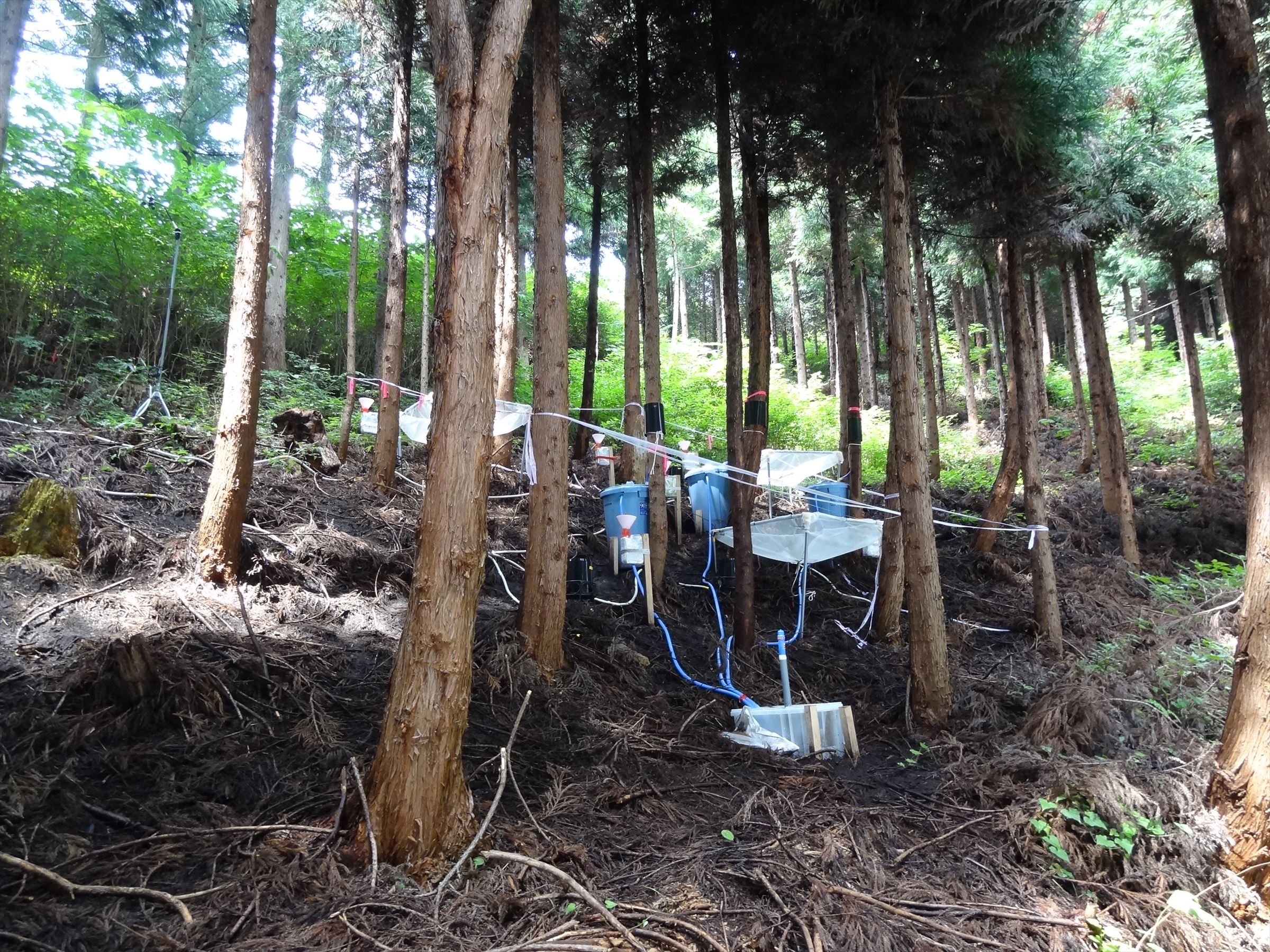
原子力災害環境影響評価論I
原発事故等に伴って環境中に放出された放射線核種について、その拡散、沈着、移行過程と水・物質循環との関わりを理解する。また、原子力災害の環境影響評価のためのモニタリング手法およびモデリング手法について紹介する。
講義ファイル
動画
- 1. 環境中の放射性核種(1)(2)(平成28年度)
- 2. 環境中の放射性核種(3)(平成28年度)
- 3. 環境中移行・評価法(1)(平成28年度)
- 4. 環境中移行・評価法(2)(平成28年度)
- 5. 環境中移行評価手法(3)(平成28年度)
- 6. モデリング手法(1)(平成28年度)
- 7. モデリング手法(2)(平成28年度)
- 8. モデリング手法(3)(平成28年度)
- 9. 環境中の放射性核種(1)放射性核種とは?自然界の放射線、人工放射性核種(平成29年度)
- 10.環境中の放射性核種(2)原子力災害の歴史、環境への放出(平成29年度)
- 11.環境中移行・評価手法(1)大気輸送・沈着過程(平成29年度)
- 12.環境中移行・評価手法(2)陸域、侵食、河川を通じた移行(平成29年度)
- 13.環境中移行・評価手法(3)森林環境中の移行・循環(平成29年度)
- 14.モデリング手法(1)海洋への移行(平成29年度)
- 15.モデリング手法(2)植物内での転流(平成29年度)
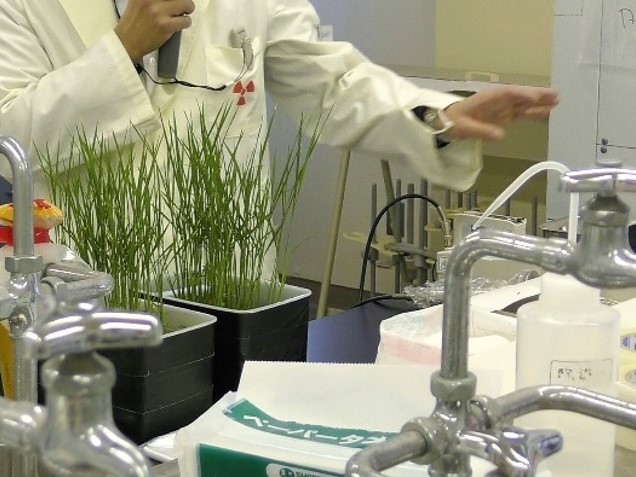
環境放射能動態解析論Ⅱ
放射線の人体・動植物影響の基礎から、環境中の極微量放射性核種測定や分布・挙動に関する最先端の研究を紹介する。
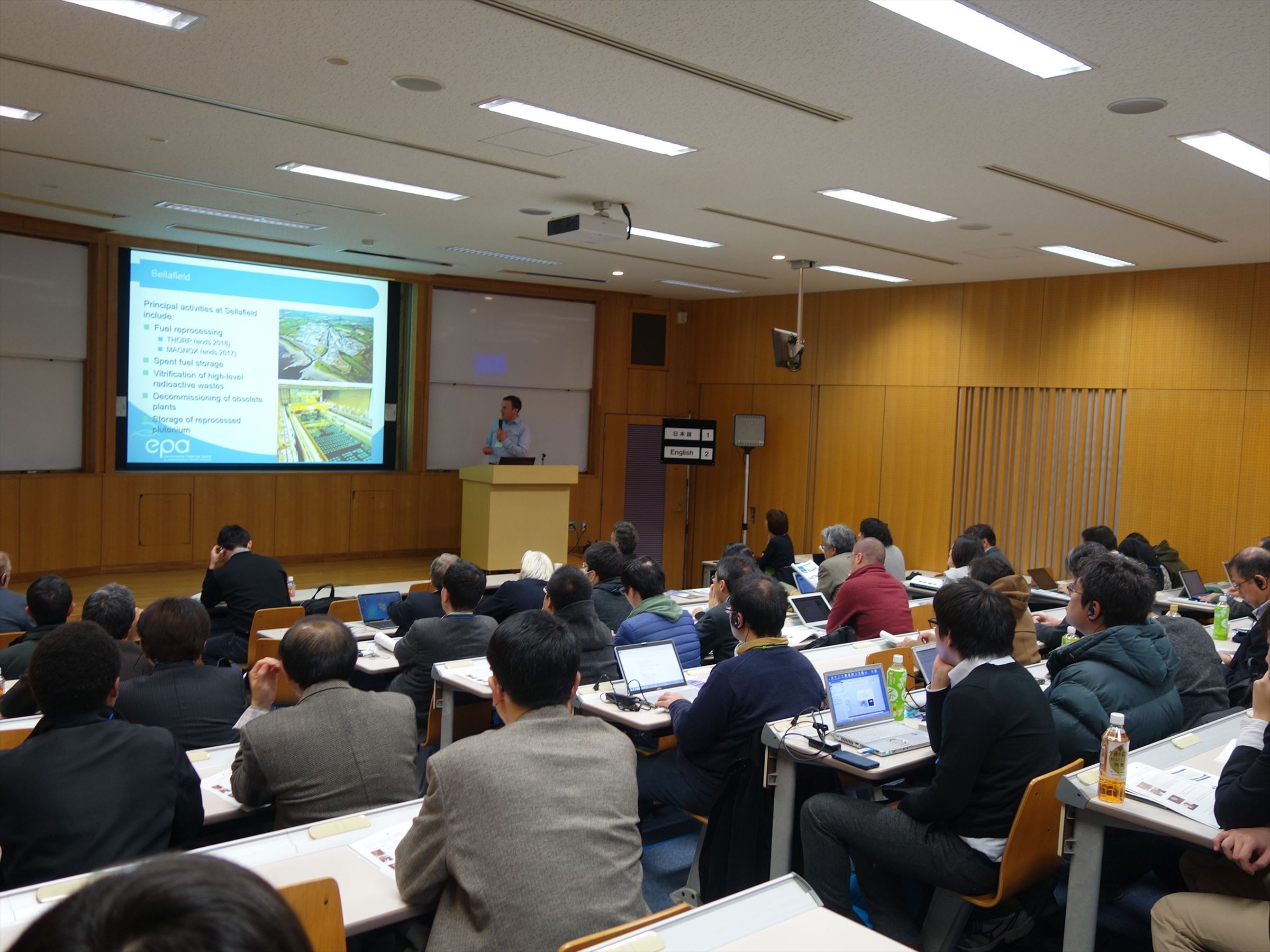
キックオフシンポジウム
2016/3/12(土)に開催された、環境科学専攻開設の『原子力災害による環境・生態系影響リスクマネジメントプログラム(ENEP)』のキックオフシンポジウム。 チェルノブイリ(ウクライナ)やアメリカ、アイルランド、ロシアなど、各国の原子力災害の概要や環境影響に関する講演。
講義ファイル
動画
- The impact of Sellafield discharges on the environment An Irish perspective
- Environmental effects of operating the Savannah River Site : A nuclear production facility
- Radioactive water contamination and its dispersal in South Ural (Mayak area) Review
- The incident of Chernobyl and subsequent forest contamination issues







